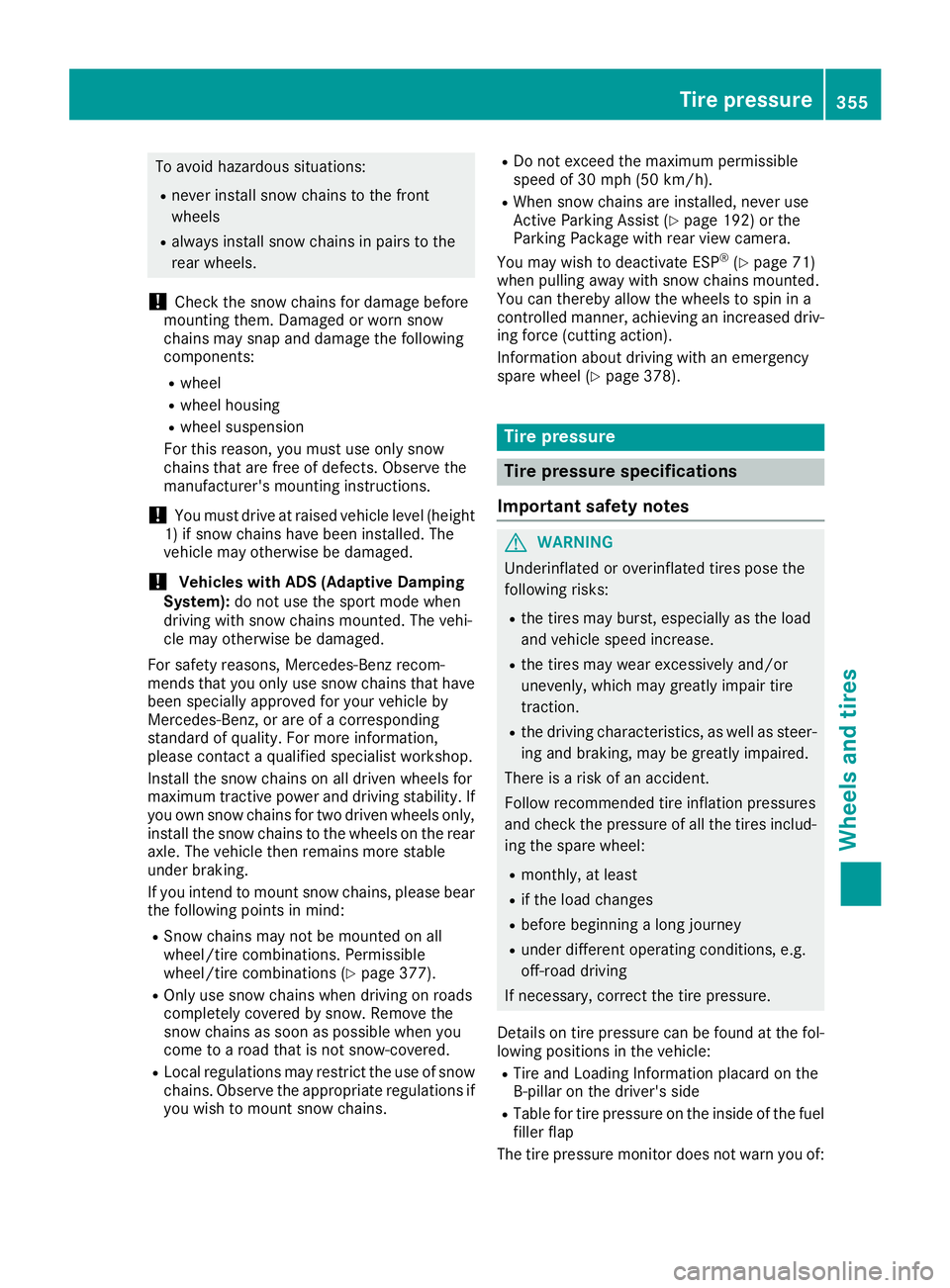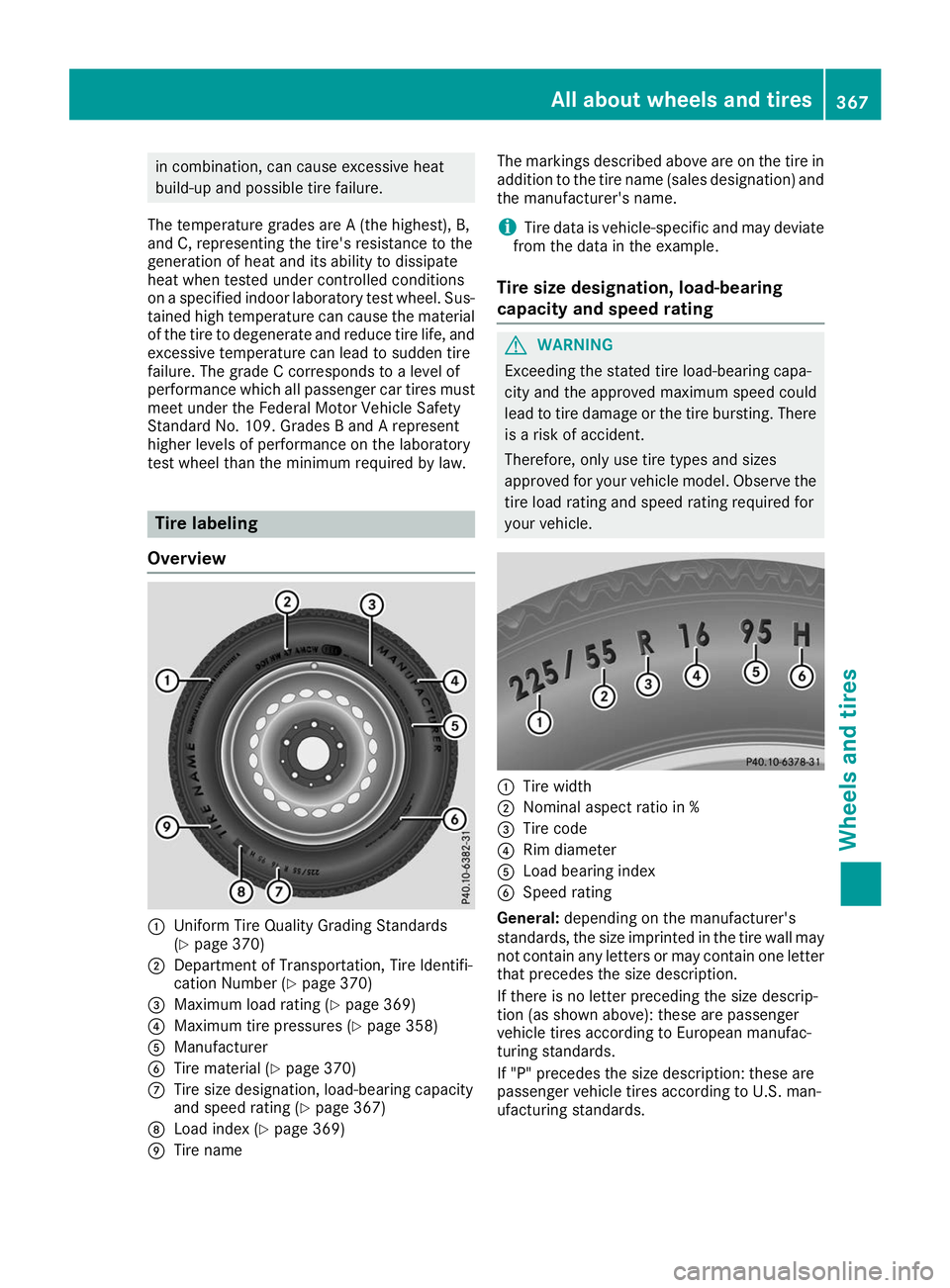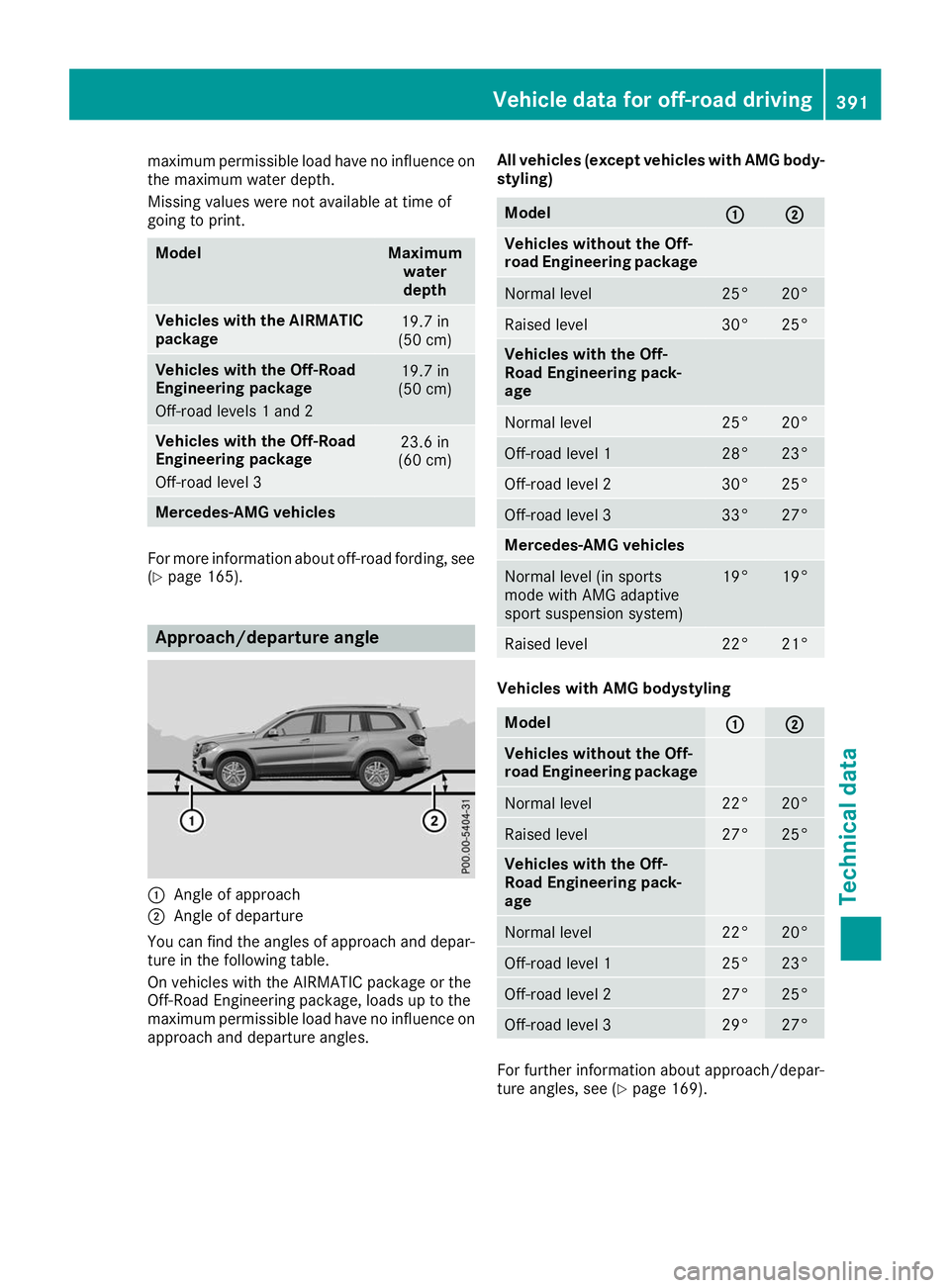Page 357 of 398

To avoid hazardous situations:
R never install snow chains to the front
wheels
R always install snow chains in pairs to the
rear wheels.
! Check the snow chains for damage before
mounting them. Damaged or worn snow
chains may snap and damage the following
components:
R wheel
R wheel housing
R wheel suspension
For this reason, you must use only snow
chains that are free of defects. Observe the
manufacturer's mounting instructions.
! You must drive at raised vehicle level (height
1) if snow chains have been installed. The
vehicle may otherwise be damaged.
! Vehicles with ADS (Adaptive Damping
System): do not use the sport mode when
driving with snow chains mounted. The vehi-
cle may otherwise be damaged.
For safety reasons, Mercedes-Benz recom-
mends that you only use snow chains that have been specially approved for your vehicle by
Mercedes-Benz, or are of a corresponding
standard of quality. For more information,
please contact a qualified specialist workshop.
Install the snow chains on all driven wheels for
maximum tractive power and driving stability. If
you own snow chains for two driven wheels only, install the snow chains to the wheels on the rear
axle. The vehicle then remains more stable
under braking.
If you intend to mount snow chains, please bear
the following points in mind:
R Snow chains may not be mounted on all
wheel/tire combinations. Permissible
wheel/tire combinations (Y page 377).
R Only use snow chains when driving on roads
completely covered by snow. Remove the
snow chains as soon as possible when you
come to a road that is not snow-covered.
R Local regulations may restrict the use of snow
chains. Observe the appropriate regulations if
you wish to mount snow chains. R
Do not exceed the maximum permissible
speed of 30 mph (50 km/h).
R When snow chains are installed, never use
Active Parking Assist (Y page 192) or the
Parking Package with rear view camera.
You may wish to deactivate ESP ®
(Y page 71)
when pulling away with snow chains mounted.
You can thereby allow the wheels to spin in a
controlled manner, achieving an increased driv-
ing force (cutting action).
Information about driving with an emergency
spare wheel (Y page 378). Tire pressure
Tire pressure specifications
Important safety notes G
WARNING
Underinflated or overinflated tires pose the
following risks:
R the tires may burst, especially as the load
and vehicle speed increase.
R the tires may wear excessively and/or
unevenly, which may greatly impair tire
traction.
R the driving characteristics, as well as steer-
ing and braking, may be greatly impaired.
There is a risk of an accident.
Follow recommended tire inflation pressures
and check the pressure of all the tires includ-
ing the spare wheel:
R monthly, at least
R if the load changes
R before beginning a long journey
R under different operating conditions, e.g.
off-road driving
If necessary, correct the tire pressure.
Details on tire pressure can be found at the fol-
lowing positions in the vehicle:
R Tire and Loading Information placard on the
B-pillar on the driver's side
R Table for tire pressure on the inside of the fuel
filler flap
The tire pressure monitor does not warn you of: Tire pressure
355Wheels and tires Z
Page 369 of 398

in combination, can cause excessive heat
build-up and possible tire failure.
The temperature grades are A (the highest), B,
and C, representing the tire's resistance to the
generation of heat and its ability to dissipate
heat when tested under controlled conditions
on a specified indoor laboratory test wheel. Sus- tained high temperature can cause the material
of the tire to degenerate and reduce tire life, and excessive temperature can lead to sudden tire
failure. The grade C corresponds to a level of
performance which all passenger car tires must
meet under the Federal Motor Vehicle Safety
Standard No. 109. Grades B and A represent
higher levels of performance on the laboratory
test wheel than the minimum required by law. Tire labeling
Overview 0043
Uniform Tire Quality Grading Standards
(Y page 370)
0044 Department of Transportation, Tire Identifi-
cation Number (Y page 370)
0087 Maximum load rating (Y page 369)
0085 Maximum tire pressures (Y page 358)
0083 Manufacturer
0084 Tire material (Y page 370)
006B Tire size designation, load-bearing capacity
and speed rating (Y page 367)
006C Load index (Y page 369)
006D Tire name The markings described above are on the tire in
addition to the tire name (sales designation) and the manufacturer's name.
i Tire data is vehicle-specific and may deviate
from the data in the example.
Tire size designation, load-bearing
capacity and speed rating G
WARNING
Exceeding the stated tire load-bearing capa-
city and the approved maximum speed could
lead to tire damage or the tire bursting. There is a risk of accident.
Therefore, only use tire types and sizes
approved for your vehicle model. Observe the
tire load rating and speed rating required for
your vehicle. 0043
Tire width
0044 Nominal aspect ratio in %
0087 Tire code
0085 Rim diameter
0083 Load bearing index
0084 Speed rating
General: depending on the manufacturer's
standards, the size imprinted in the tire wall may not contain any letters or may contain one letterthat precedes the size description.
If there is no letter preceding the size descrip-
tion (as shown above): these are passenger
vehicle tires according to European manufac-
turing standards.
If "P" precedes the size description: these are
passenger vehicle tires according to U.S. man-
ufacturing standards. All about wheels and tires
367Wheels and tires Z
Page 393 of 398

maximum permissible load have no influence on
the maximum water depth.
Missing values were not available at time of
going to print. Model Maximum
water
depth Vehicles with the AIRMATIC
package 19.7 in
(50 cm) Vehicles with the Off-Road
Engineering package
Off-road levels 1 and 2
19.7 in
(50 cm) Vehicles with the Off-Road
Engineering package
Off-road level 3
23.6 in
(60 cm) Mercedes-AMG vehicles
For more information about off-road fording, see
(Y page 165). Approach/departure angle
0043
Angle of approach
0044 Angle of departure
You can find the angles of approach and depar-
ture in the following table.
On vehicles with the AIRMATIC package or the
Off-Road Engineering package, loads up to the
maximum permissible load have no influence on approach and departure angles. All vehicles (except vehicles with AMG body-
styling) Model
0043 0043 0044
0044
Vehicles without the Off-
road Engineering package
Normal level 25° 20°
Raised level 30° 25°
Vehicles with the Off-
Road Engineering pack-
age
Normal level 25° 20°
Off-road level 1 28° 23°
Off-road level 2 30° 25°
Off-road level 3 33° 27°
Mercedes-AMG vehicles
Normal level (in sports
mode with AMG adaptive
sport suspension system) 19° 19°
Raised level 22° 21°
Vehicles with AMG bodystyling
Model
0043 0043 0044
0044
Vehicles without the Off-
road Engineering package
Normal level 22° 20°
Raised level 27° 25°
Vehicles with the Off-
Road Engineering pack-
age
Normal level 22° 20°
Off-road level 1 25° 23°
Off-road level 2 27° 25°
Off-road level 3 29° 27°
For further information about approach/depar-
ture angles, see (Y
page 169). Vehicle data for off-road driving
391Technical data Z